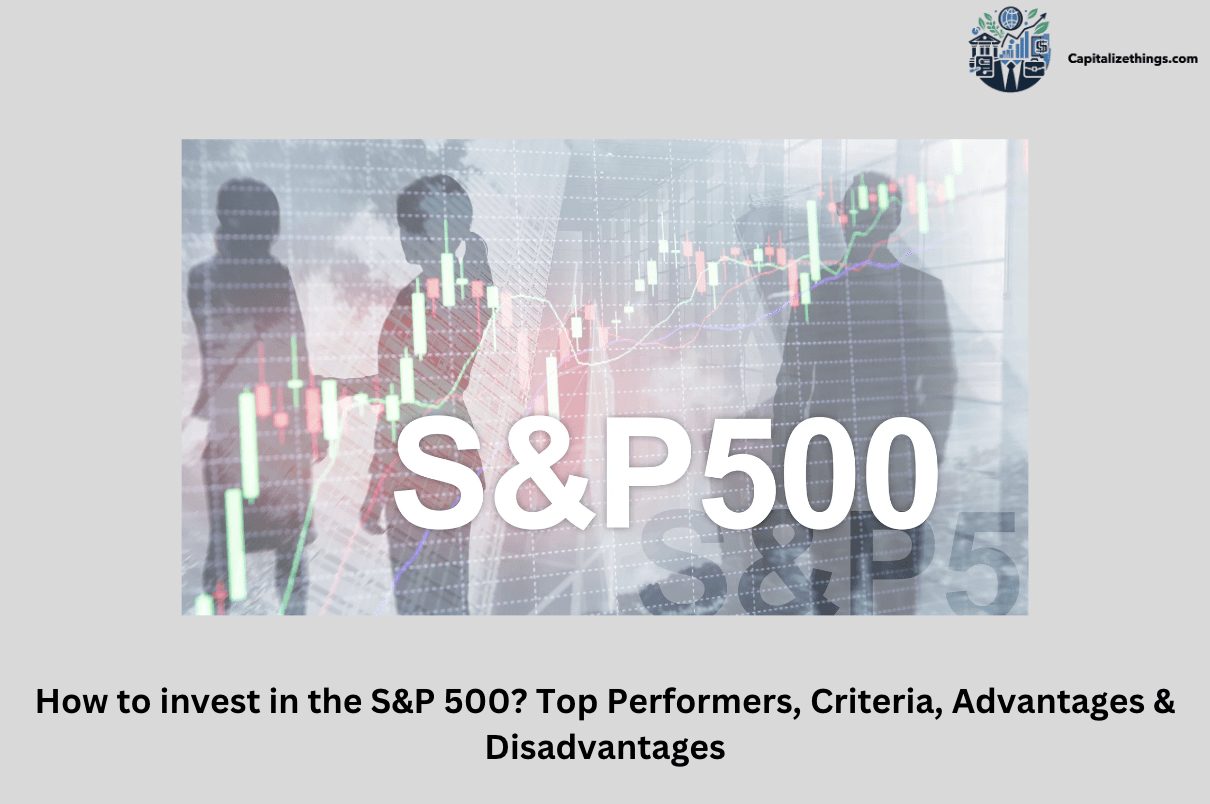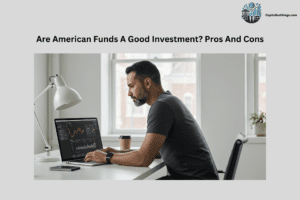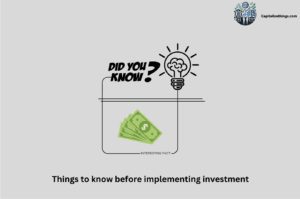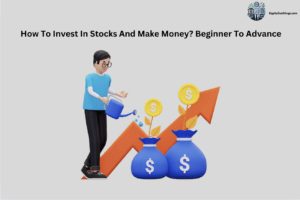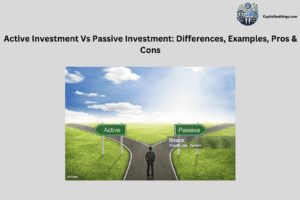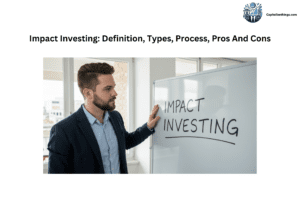The S&P 500 analyzes the 500 largest U.S. corporations by market valuation. While you can’t make direct investments in the S&P 500, you can invest in individual companies or index funds like mutual funds or ETFs. The S&P 500 index funds know 500 of the largest U.S. public corporations by capitalization in markets or share value. This index accounts for 84.99% of U.S. stock market capitalization with a full amount market cap of $39 trillion. Microsoft, Nvidia, and Apple are the top performers in the S&P 500 index.
There are also criteria to know when investing in the S&P 500 indexes. A more extensive index is preferable for index investing than a few firms in any section. Thus, keep away from Mid Cap 50 and Small Cap 50. Comparing the small-cap and mid-cap indices shows why they should be tactical. The Nifty Midcap 150 index outperforms the small-cap index in five years at 14.54%. It also declined less in different markets. Thus, small caps defy high-risk, high-reward.
Due to its magnitude, analyzing the S&P 500’s direction and performance can give you an instant read on the market. Moreover, buying S&P 500-emulating stocks is a great strategy to diversify your portfolio.
The S&P, along with other market-cap-weighted indices, is limited by expensive stocks. These overestimate their value. If a stock is heavily weighted and overvalued, it expands the index. A company’s rising market cap doesn’t necessarily indicate its fundamentals. Simply said, it displays stock value growth compared to shares outstanding. Thus, equal-weighted indices are more popular. These indices react identically to corporate stock prices.
Maximize your long-term returns with a strategic S&P 500 investment. CapitalizeThings.com’s experts can guide you. Connect with us today at +1 (323) 456-9123 or reach out to us via email.
What is the S&P 500?
The market-capitalization and weighted S&P 500 index includes 500 major U.S. public companies. Due to other criteria, the index doesn’t exactly list the top 500 U.S. corporations by market cap. However, the S&P 500 index is still one of the strongest indicators of major American stocks and the stock markets.
What does it mean to invest in the S&P 500?
Investing in the S&P 500 means buying shares in a fund that tracks the performance of 500 large U.S. companies across various industries. The S&P 500 controls the 500 largest U.S. corporations by market cap. Stocks of S&P 500 firms or index funds from mutual funds or ETFs can be bought instead of the index itself.
How many companies’ performance does the S&P 500 track?
S&P 500 tracks 500 companies’ performance.
What are the top-performing stocks of the S&P 500?
The top 25 performing stocks of S&P 500 are given in the table:
| No. | Companies | Index Weight |
| 1 | MICROSOFT | 6.99% |
| 2 | APPLE | 6.91% |
| 3 | NVIDIA | 6.16% |
| 4 | AMAZON.COM, INC | 3.63% |
| 5 | ALPHABET INC CL A | 2.22% |
| 6 | META PLATFORMS INC, CLASS A | 2.22% |
| 7 | ALPHABET INC CL C | 1.87% |
| 8 | BERKSHIRE HATHAWAY | 1.72% |
| 9 | ELI LILLY | 1.50% |
| 10 | BROADCOM | 1.45% |
| 11 | JPMORGAN CHASE & COMPANY | 1.31% |
| 12 | TESLA | 1.31% |
| 13 | EXXON MOBIL | 1.13% |
| 14 | UNITEDHEALTH GROUP INC | 1.13% |
| 15 | VISA INC. | 0.88% |
| 16 | THE PROCTER AND GAMBLE CO | 0.87% |
| 17 | JOHNSON AND JOHNSON | 0.83% |
| 18 | COSTCO | 0.81% |
| 19 | MASTERCARD | 0.78% |
| 20 | HOME DEPOT, INC. | 0.76% |
| 21 | MERCK COMPANY. INC. | 0.70% |
| 22 | ABBIE INC | 0.68% |
| 23 | WALMART | 0.66% |
| 24 | BANK OF AMERICA | 0.63% |
| 25 | NETFLIX | 0.60% |
What is the minimum amount to invest in the S&P 500?
There is no fixed minimum investment amount. Sometimes,you have to spend $100 for a single S&P 500 ETF unit, but some robo-advisors like Stash provide fractional shares for $5.
Can we invest in the S&P 500 ETF?
Yes! You can invest in the S&P 500 ETF.
How can you invest in the S&P 500 in Robinhood?
New consumers must register, be accepted, and link their bank accounts. The stock incentive cash value cannot be withdrawn thirty days after the following claim. Unclaimed stock rewards expire after 60 days. Read rbnhd.co/freestock for more information. Securities trading takes place via Robinhood Financial LLC.
Can you invest in the S&P 500 through Fidelity?
Yes! You can invest in the S&P 500 through Fidelity. The Fidelity 500 Index Portfolio aims to match the total return (i.e., the sum of capital adjustments and income) of publicly traded U.S. common stocks as reflected in the Standard & Poor’s 500 Index (S&P 500) while minimizing transaction fees and other expenses.
Is Schwab S&P 500 Index Fund a good investment?
Yes! Schwab S&P 500 Index Fund is a good investment. Of course, investors want good fund performance. SWPPX has 17.71% three-year standard deviation vs. 0% for the category. Its 3-year yearly total return of 9.56% puts it in the top third for a shorter duration horizon. Remember that product returns can only cover part of the costs. Total returns exclude the fund’s [%] selling charge. The overall return would have been lower with sales charges.
When assessing a fund’s performance, consider its return standard deviation. Lower standard deviations reduce fund volatility. Compared with the category average of 0%, SWPPX’s three-year standard deviation is 17.71%. The fund has an 18.06% 5-year standard deviation, higher than the category average of 4%. Over the past five years, the fund has been more volatile than other similar funds.
Can you invest in the S&P 500 on Vanguard?
Yes! You can invest in the S&P 500 on Vanguard. Vanguard S&P 500 ETF investing is passive because the fund tracks the S&P 500. In other words, the fund’s board of directors doesn’t buy and sell stocks, which lowers expenses. VOO is a low-stress way to access the U.S. equity market, but investors should consult a financial adviser before buying the Vanguard S&P 500 ETF.
How to invest in S&P 500 Forbes?
There are several S&P 500 index funds, therefore utilize these criteria to invest in S&P 500 Forbes:
Index funds are managed without intervention, so managers buy and sell stocks to match the benchmark. No intensive study or trading is needed. These low expense ratios keep fund maintenance fees modest. Since most S&P 500 index funds perform equally, choose one with the lowest expense ratio.
Tax-advantaged savings and taxable investment accounts have various investment minimums for index funds. Make sure minimum purchase quantities match your investment when comparing S&P 500 index funds. After that initial obstacle, you can usually buy fractional shares in any monetary amount.
Investing in S&P 500 large-caps pays dividends. Dividends can enhance returns even in low markets, so compare S&P 500 index fund dividend yields. Index fund founding dates matter. Longer-term index funds can show how they survived bull and bear markets.
Can we invest in S&P 500 stocks?
Yes! You can invest in S&P 500 stocks.
What is the proper way of investing in the S&P 500?
The proper way to invest in the S&P 500 is by an index fund or ETF. These funds track the S&P 500 to expose investors to its firms without the hassle of buying their stocks. Index funds and ETFs can be purchased in taxable brokerage accounts or tax-favoured 401(k)s and IRAs. To purchase investments, one must have a brokerage account. Buy S&P 500 stocks or funds using your deposit in your brokerage account. Avoid taxable brokerage accounts and invest in the S&P 500 in an IRA or 401(k) plan for retirement.
What is the best time to invest in the S&P 500?
The best time to invest in the S&P 500 is typically as soon as possible, following the principle of “time in the market beats timing the market.” Investments at new S&P 500 all-time highs usually beat others. S&P 500 returns average 9.4% in the year after a record high since 1970. It averaged 20.2% over 24 months. That involves making investments at the market peak before a lousy market. When investing elsewhere, average 12-month and 24-month returns were 9% and 18.5%, respectively.
Even at record highs, investors expect equities to advance. How fast will stocks hit their new high? As every investor understands, the stock market doesn’t rise straight, and some investors can be concerned that new highs could take a long time to reach. New all-time highs frequently cluster. A market peak often leads to a prolonged rise. S&P 500 ended at a record high 77 times in 1995, 30% of trading sessions. S&P 500 has shut at a fresh all-time high 38 times in 2024 since Jan 19.
How can you invest in the S&P 500 with an index fund?
You can invest in the S&P 500 through an index fund by purchasing shares of an S&P 500 index mutual fund or ETF from a brokerage firm. Discount brokers offer commission-free S&P 500 ETF trading. S&P 500 index funds are accessible via fund firms, advisors, and discount brokers. ETFs and mutual funds are also available through 401(k), IRA, and roboadvisor systems. The fund manager receives an annual fee from ETF investors.
Fund managers receive loads of commissions from many mutual funds. These can be front-end or back-end loads. The fact sheet for each ETF or mutual fund on the organization’s website lets investors track performance. Investors can calculate their investment capital using the fund name and ticker symbol.
Should you invest in the S&P 500 with individual stocks?
Yes! You should invest in the S&P 500 with individual stocks. It would be like buying a grocery list instead of groceries to invest effectively in the S&P 500. Instead, use index funds to purchase the S&P 500. Baskets hold all S&P list groceries. Index funds mirror market indices. It combines investors’ money to buy stocks or other types of securities.
S&P 500 index funds own S&P 500 stocks. Investment professionals run most index funds passively, trading the holdings little. They aim to replicate the index’s composition and performance, not beat it. Long-term buy-and-hold investors enjoy index funds because they let their assets increase automatically.
Is investing in an S&P 500 index fund typically considered a passive investment strategy?
Yes! Investing in an S&P 500 index fund is typically considered a passive investment strategy. Passive investing maximizes returns by minimizing purchasing and selling. Index investing is an method in which investors purchase and hold a benchmark like the S&P 500 index.
What brokerage should I use to invest in the S&P 500?
Pepperstone is the best broker overall to invest in S&P 500. Pepperstone’s minimal spreads and fast execution make S&P 500 trading great.
How can I invest in the S&P 500 without a broker?
To invest in S&P 500, one can buy S&P 500 stocks or index funds through mutual funds or ETFs, but not the index itself. New investors choose the latter since they offer broad exposure to markets and diversity at a cheap cost.
What are the criteria for picking the right index funds for your portfolio?
The criteria you should follow to pick the suitable index funds for your portfolio
- Diversified: Many holdings should be available.
- Representative: The index fund should offer all opportunities to manage funds actively.
- Transparent: The fund should follow a well-defined index so investors can predict its market behaviour.
- Investable: It should buy liquid, tractable securities.
- Sensible: Portfolios should be based on solid economic principles.
- Low Turnover: The index controls portfolio turnover.
Investors often link index funds with stocks. Index funds offer inexpensive exposure to fixed-income and overseas stocks.
- Fixed income:
Target maturity index funds dominate fixed-income index funds. Target maturity index funds are open-ended passive debt-owed mutual funds with maturity dates. These funds buy Central / State Government bonds with specific maturities. They collect interest from these bonds and give out the interest and capital on maturity, like F.D.s. Target maturity funds are open-ended so you can redeem units at any time at NAV. Target maturity funds lock in rates until maturity, making them suited in high-interest times like now. SEBI regulations limit target maturity funds to G-Secs and state-owned development loans (SDLs), which are sovereign and credit-free. Choose target maturity funds based on your investing needs.
- International equities
Index funds offer low-cost international diversification. Worldwide index funds help reduce portfolio volatility because markets have little correlation. For example, some worldwide markets can perform better when India underperforms. Foreign equities can expose you to global megatrends, especially in breakthrough technologies that still need to be mature. Your risk tolerance and investing goals determine your international equity allocation. Call your financial advisor if you need help assessing your asset allocation across asset classes to determine which international market is best for you.
Is investing in the S&P 500 a good idea?
Yes! Investing in the S&P 500 is a good idea.Over time, the S&P 500 has given investors good returns. Investors benefit from compounding or gaining returns on their previous returns. Since 1970, it has averaged an 11% annual return, including dividends.
What is the best S&P 500 to invest in?
The 4 best S&P 500 to invest in:
- Fidelity 500 Index Fund (FXAIX).
- Vanguard 500 Index Fund Admiral Shares (VFIAX).
- Schwab S&P 500 Index Fund (SWPPX).
- State Street S&P 500 Index Fund Class N (SVSPX).
Can investing in the S&P 500 helps diversify an investment portfolio?
Yes! Investing in the S&P 500 helps diversify an investment portfolio.Index funds and ETFs duplicate indices. Some indexes are more varied than others. The S&P 500 has nearly 500 stocks, but the Dow Jones Industrial Index has only 30, making it less diverse. The S&P 500 index fund you hold cannot be diversified. You should also incorporate small amounts of bonds, real estate, commodities, and other assets.
Is smart beta indexes a promising approach for S&P 500 investing?
Yes! Smart beta indexes are a promising approach for S&P 500 investing. Smart beta investment blends active and passive investing features. Beta lowers risk, alpha, and diversity at a lower cost than active management and somewhat higher than index investing. Its goals are best portfolio construction and diversification. Smart beta is the efficient market hypothesis and value investment. Equity, commodities, fixed income, and multi-asset classes are suited to smart beta investing. In current portfolio theory, economist Harry Markowitz introduced smart Beta.
How much of my portfolio should be in the S&P 500?
Your portfolio should be 90% in the S&P 500. Buffet’s 90/10 scheme relies on low-fee index funds. Stock index funds with low fees have many benefits. First, their cost-efficiency assures that a large amount of invested capital actively generates returns, avoiding long-term erosion and boosting portfolio growth. These funds immediately diversify across companies and sectors, lowering risk and exposure to underperforming stocks.
Index funds monitor their indices closely to deliver predictable returns. Passive management, tax efficiency, and low turnover cut fees and taxes relative to actively managed funds, making them appealing to long-term investors. However, index funds have market risks despite their benefits. Holding 90% of one’s portfolio in stocks only diversifies so much. Weighted indexes can favor larger businesses, concentrating ownership. Passive funds replicate index returns without active management, sometimes losing returns.
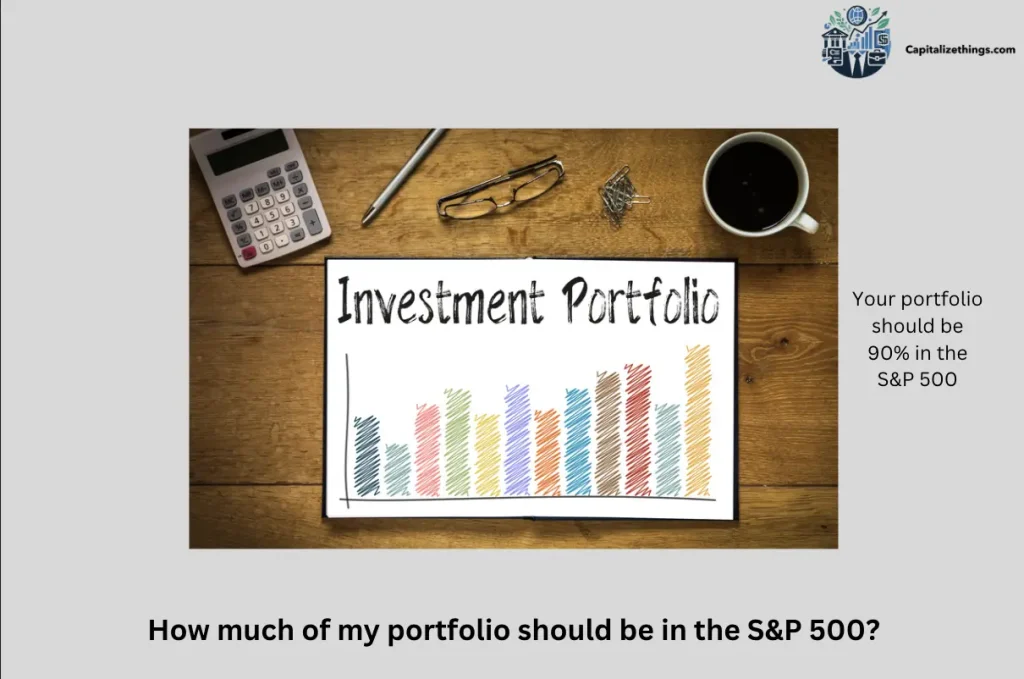
What are the advantages and disadvantages of investing in the S&P 500?
Benefits of investing in the S&P 500:
Index funds have many benefits. Their most significant benefit is passive management because they track stock indices. These index funds have cheap costs due to no active management. ETFs, commonly index funds, have the lowest fees since less of their investment earnings go to fees and expenditures, which can save investors money over time.
Academic research shows index funds outperformed active management funds. Even market-beating managers might lose performance. Many investors find it wise to have index funds in their portfolios.
Index funds also help investors meet benchmark goals more consistently. Say an investor is interested in outperforming the market and is willing to take extra risks. A 90% low-cost S&P 500 ETF and 10% 2x S&P 500 leveraged ETF regularly beats the market. With this technique, fund managers cannot pick bad stocks. Only when leveraged ETFs underperform the market due to low market returns is there risk.
Disadvantages of investing in the S&P 500
There are drawbacks of investing in index funds. The need for adaptability limits index funds to long-standing investment styles and industries. In 2020, stock indexes were volatile. The index funds just followed the stock indices down. Hedging or cashing positions can have limited the loss for a skilled active manager. Index funds cannot replicate the best fund managers’ strategies, another downside. Growth at a reasonable price (GARP) ETFs are scarcer than value investing ETFs. GARP ETFs cannot match Peter Lynch’s long-term performance. Fund managers continuously develop new strategies. For years, even the most effective approaches would not inspire ETF imitators.
Is the S&P 500 a guaranteed investment with no risk?
No! It does not guarantee your success. Experts warn that S&P 500 firms don’t guarantee outcomes. He warns that all investments are risky and prone to market instability, like in 2022. Investors should look beyond the S&P 500. Investments in smaller, promising businesses and international shares can provide growth opportunities, while securities and other assets provide diversity.
What is the market cap required for the S&P 500?
The minimum market capitalization required for a company to be eligible for inclusion in the S&P 500 is $14.6 billion as of 2024.. These market cap requirements are for index accession, not membership. Thus, an index element that looks to violate inclusion requirements is not removed unless current circumstances demand a change.
Can you sell your S&P 500?
Yes! You can sell your S&P 500.Owning a share lets you sell whenever you choose. You can sell shares that are worth more than you paid. No need to sell. Selling involves taxes. Shares held less than a year are considered short-term gains or losses in the U.S. Wait for a year until selling for a long-term gain and lower taxes. Your dividend account can regularly buy back business shares.
Should you invest in the S&P 500 if you are retired?
Yes, you should invest in the S&P 500 if you are retired. As you seek to grow retirement money, S&P 500 index funds can lower your chance of losses and give you peace of mind. Avoid investing your cash in specific stocks if you’re worried. Instead of researching and tracking individual stocks, use the broader market. As shown, this simple strategy might still make you a billionaire.
Should we hire a financial advisor before investing in the S&P 500?
Yes! Hiring a financial advisor before investing in the S&P 500 can support and inform you about loss and benefits.
Do S&P 500 investors pay taxes?
Yes! S&P 500 investors pay taxes. Tax-wise, S&P 500 funds are non-equity-oriented. Companies are taxed like debt funds while investing in stocks.
Does passive investing in the S&P 500 typically require active management?
No! Passive investing in the S&P 500 typically does not require active management.
Does investing in the S&P 500 require a deep understanding of individual stock performance?
Investing in the S&P 500 requires a deep understanding of individual stock performance. An all-time high is an excellent opportunity to invest without significant company expertise. Simple index funds monitor broad indexes like the S&P 500.
Does the S&P 500 beat real estate?
Yes! The S&P 500 beats real estate. The S&P 500 has outperformed real estate in annual returns.
How much $10,000 would be invested in the S&P 500?
With $10,000 in the S&P 500, you’d have $12,690.
How much would I make if I invested in the S&P 500?
An unmanaged index of extensive U.S. stocks, the S&P 500, has averaged 10% annually since 1926. Investments with higher returns carry more risk.
Is the P/E ratio a reliable indicator of S&P 500 stock value?
Yes! The P/E ratio is a effective indicator of S&P 500 stock value. Most owners and analysts valuate stocks using the price-to-earnings ratio (P/E). It displays if a stock has an undervaluation and how it relates to its industry group or the S&P 500 Index. An acceptable P/E for one sector could be low for another, so compare similar companies. Investors use the P/E ratio to compare a stock’s market value to earnings. Based on previous or projected earnings, it reflects what the market will pay for a stock.
Does a high P/B ratio for a company in the S&P 500 indicate it’s overvalued or undervalued?
A high P/B ratio for a company in the S&P 500 indicates it’s overvalued. It indicates investors are prepared to pay more for the company’s book value, which can signify significant asset returns for the company. A low P/B ratio can suggest that the company’s stock is underrated compared to its assets.
Can systematic investment plans be used to invest in the S&P 500?
Yes! Systematic investment plans (SIPs) can be used to invest in the S&P 500. A SIP involves periodically investing a fixed amount in an exchange-traded or mutual fund. SIPs help people invest their cash over time in a controlled way. They are a joint investment for long-term wealth accumulation and market-related risk reduction.
Can you buy shares of an S&P 500 index fund through an investment company in the U.S.?
You can buy S&P 500 stocks or index funds through mutual funds or ETFs, but not the index itself.
Can ESG investing be a profitable strategy for S&P 500 investors?
Yes! ESG investing can be a profitable strategy for S&P 500 investors.
Can investing in the S&P 500 be a good opportunity for long-term growth?
Yes! Investing in the S&P 500 can be a good opportunity for long-term growth. Investors can use the S&P 500 to compare their portfolios to the market and make strategic decisions. Long-term growth makes the S&P 500 appealing to investors seeking capital appreciation.
Do shareholders benefit from S&P 500 investing?
Yes! Shareholders benefit from S&P 500 investing.
Is dollar-cost averaging a fundamental principle in S&P 500 investing?
Yes! Dollar-cost averaging is a fundamental principle in S&P 500 investing. Dollar-cost averaging involves investing a set amount monthly or bi-weekly. You put money into your 401(k) retirement account each paycheck, using dollar-cost averaging.
Over time, you spread buy points to prevent “timing the market.” Timing the market involves investing all your cash at once, which can lead to a significant loss if the stock collapses. You’ll buy over time and average your prices via dollar-cost averaging.
Dollar-cost averaging gets benefit from market volatility. Regularly adding money lowers your average purchase cost and lets you buy more shares at cheaper market prices. Your recurring payment will buy fewer shares as the market rises, but you’ll still earn from earlier purchases.
Dollar-cost averaging has further benefits. When equities fall, people fear short-term losses, so they cease buying inexpensive stocks. By setting up an ongoing buying plan when markets (and you) are calm, you can avoid this emotional bias and profit from decreasing stock prices while everyone else is terrified.
You can accumulate more shares by reinvesting dividends, which applies dollar-cost averaging to quarterly dividend payouts. After setting up the scheme, your cash dividends will grow into stock without your intervention. Dividends on dividends will come slowly!
Is understanding market trends a crucial skill for S&P 500 investors?
Yes! Understanding market trends is a crucial skill for S&P 500 investors. Economic indicators, interest rates, trading volume, and seasonal trends help S&P 500 traders optimize their strategies, prevent common mistakes, understand market trends, and manage risk.
Can an appraisal of a company’s assets be used to determine its S&P 500 eligibility?
No! Only appraisal of a company’s assets can’t be used to determine its S&P 500 eligibility.
Are there any limitations to using valuation techniques when investing in the S&P 500?
Yes! There are many limitations to using valuation techniques when investing in the S&P 500.
Conclusion
There are various S&P 500 investment options. The easiest way is to buy an S&P 500 index fund. Tax-advantaged accounts like 401(k), HSA, IRA, and 529 plans allow this. A taxable brokerage account could be used to buy an S&P 500 index fund. If you prefer manual investing, an S&P 500 ETF is an option. Index funds invest automatically. Like index funds, actively managed ETFs try to match the S&P 500. The managers buy a basket of equities to match the benchmark index and offer shares to investors. Where ETFs vary: ETF shares fluctuate like equities all day. After the close-up of markets, index fund shares can be exchanged once a day. Traditional investors who invest in stocks see little difference. Amazon, Nvidia, Apple, and Microsoft are top performers in the S&P 500 index.
Advantage to invest in S&P index is that buying in an S&P 500 fund diversifies your portfolio instantaneously and is safer than buying individual stocks. If the S&P 500 does well, so will your S&P 500 index mutual fund or ETF.
The disadvantage of investing in the S&P 500 is that the rich get richer. Since passive investing is rising, investors are investing in S&P 500 funds, which have caused a ‘rich get richer’ problem by making the most extensive stocks larger. Active managers selling a stock on the top of index funds selling a percentage can increase volatility. The market could stay overvalued.
Unsure if the S&P 500 is right for you? CapitalizeThings.com offers clarity. Email us for a free consultation and discuss your investment goals.

Larry Frank is an accomplished financial analyst with over a decade of expertise in the finance sector. He holds a Master’s degree in Financial Economics from Johns Hopkins University and specializes in investment strategies, portfolio optimization, and market analytics. Renowned for his adept financial modeling and acute understanding of economic patterns, John provides invaluable insights to individual investors and corporations alike. His authoritative voice in financial publications underscores his status as a distinguished thought leader in the industry.

